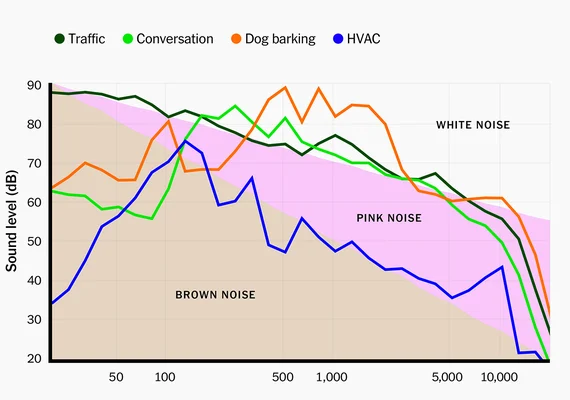White Noise vs. Brown Noise: Which Sound Is Best for Sleep?

When it comes to finding the perfect sound for sleep, both white and brown noise have become popular choices. These ambient sounds can easily mask unwanted noises in our environment, creating a comfortable atmosphere that makes it easier to drift off to sleep. But which one is the best option for a night of restful slumber? In this article, we will explore the differences between white noise and brown noise and determine which sound is best for sleep.
White Noise: A Broad Spectrum of Frequencies
White noise is a type of sound that contains an equal distribution of frequencies across the entire audible range. This creates a constant and soothing sound that masks background noises effectively. Many people find white noise helpful in creating a stress-free environment, making it easier to fall asleep and stay asleep throughout the night.
White noise machines are widely used in offices, homes, and even commercial establishments to create a calming atmosphere. The even distribution of frequencies makes white noise particularly effective at masking a wide range of background noises that might otherwise disrupt our sleep.
Brown Noise: A Deeper Sound with Less High Frequencies
Brown noise, also known as Brownian noise or red noise, differs from white noise in its frequency distribution. While white noise has an equal distribution across all frequencies, brown noise has more power at lower frequencies and decreases as the frequency increases. This creates a deep, soothing sound that many people find appealing for relaxation or meditation.
The low-frequency emphasis in brown noise lends itself well to masking distractions such as footsteps or snoring from neighboring rooms. As a result, brown noise can be particularly effective for those who need help staying asleep during the night.
Which Sound Is Best for Sleep?
Both white and brown noise offer unique benefits when it comes to improving our sleep quality. Ultimately, the choice between the two depends on personal preference and individual needs.
1. If you have trouble falling asleep: White noise might be your best option. Its broad spectrum of frequencies effectively masks a wide variety of ambient sounds, allowing you to focus on relaxation and drift off to sleep more easily.
2. If you have trouble staying asleep: Brown noise could be the better choice for you. The deep, soothing sound is particularly effective at masking noises that may cause disruptions during the night, ensuring a more restful and uninterrupted slumber.
3. Experiment with both: Some individuals find that combining both white and brown noise works best for their sleep needs. Others prefer to switch between the two, depending on their surroundings or mood.
In conclusion, both white and brown noise offer valuable benefits when it comes to enhancing our sleep quality. By understanding their differences and experimenting with each sound individually or in combination, you can identify the best option for achieving a restful and rejuvenating night’s sleep.






